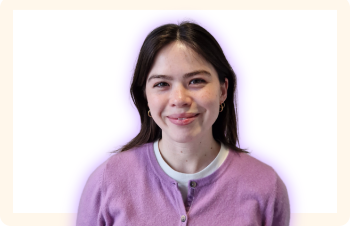In this series, Creative Access is focusing on the amazing jobs happening behind-the-scenes in the creative industries to hopefully inspire you to think about some roles and career paths that you might not have heard about before!
Former Creative Access intern Kaler Wong tells us all about his career journey from curatorial and artist administrator at White Cube to gallery assistant at East London-based contemporary gallery, Kate MacGarry…
What does your role entail?
I work as a Gallery Assistant at Kate MacGarry, a contemporary art gallery in East London. We put on six exhibitions a year and support the artists we work with in external shows, commissions and lots of different projects.
I work as a Gallery Assistant at Kate MacGarry, a contemporary art gallery in East London. We put on six exhibitions a year and support the artists we work with in external shows, commissions and lots of different projects.
We’re a very small team of six so the job is really varied and involves things like assisting with exhibitions and art fairs, administration, marketing, front of house, organising events and even condition checking works of art (below: check out Kaler and colleagues checking some prints, and take the time to appreciate ‘our beautiful bookshelves which took a whole day to arrange’). I’ve done everything from shopping for purple hydrangeas for an artist’s work to model-making miniature booths for art fairs.

What’s your favourite part of the job?
Spending time learning about an artist’s practice and then having the chance to meet them and work with them on an exhibition. We work with 21 contemporary artists (and two artist estates) who work with all sorts of media and are inspired by so many different things. I’ve learnt about ornithology, carpentry, prehistoric archaeology and Malawian history to name a few areas. I enjoy hearing artists speak about their own work and what they are trying to achieve. As an artist myself, I really enjoy seeing the development of the ideas of others, as they form something physical and concrete, and overseeing the whole exhibition process.
I also enjoy talking to guests about art as we get a lot of different people who visit the gallery. We often have groups of students from art schools who visit with varying levels of enthusiasm (occasionally students look bored out of their mind but thankfully they’re an exception). It’s good public speaking practice and ensures I’m knowledgeable and on message on the show itself. (See image of Kaler below giving a talk to a group from Kingston School of Art). We usually have the artist give a short talk to staff about the show before the opening which is invaluable for more personal insights and interesting details.

How did you get into this role?
I got into this role after a year-long traineeship at White Cube gallery, an opportunity I got through Creative Access. Honestly, I really didn’t think I would get the role, after having applied and then been rejected for a number of similar junior positions at other galleries. That was a really great experience in learning how the gallery system works and opening my eyes to the number of different roles and people that come together to put on an exhibition and support artists.
White Cube is a mega-gallery which represents some renowned international artists, so I tried to make the most of the learning opportunities. I was lucky to have a really helpful manager as well as an amazing mentor who made me feel well supported and comfortable asking stupid questions. It also taught me a lot about how to work with people and the importance of communication, from observing how my colleagues dealt with different pressures, to dealing with demanding or temperamental artists (which I saw a fair amount of).
Previously to that I did an undergrad degree in history and a master’s in art history. The art industry in general is really overqualified – I didn’t need the master’s degree to do the job, but I probably needed it to secure the role. I had previously volunteered at a couple of arts organisations and have always enjoyed making my own art @kqhuangart – which also gave me marketing skills.
What would your advice be for anyone looking to break into the art world?
Something that has really helped in my roles so far has been making an effort to see exhibitions and writing about what I’ve seen. When I moved to London for my master’s degree, I was visiting at least three exhibitions a week (admittedly quite easy in London, it may be harder elsewhere). The more you see, the more you can contextualise things and learn what you like. Being able to speak coherently about an exhibition I’ve seen or about artists I like has been very useful in interviews and more generally. It’s easy to be discouraged when things are not going your way and you’re applying for jobs and not getting anything back. But, if you’re passionate about art, don’t stop attending exhibitions and reading about them.
Looking to enter the museum and gallery sector? Find opportunities here!




